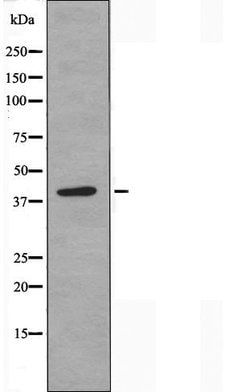SHANK2 Polyclonal Antibody, Invitrogen™
Manufacturer: Thermo Scientific
Select a Size
| Pack Size | SKU | Availability | Price |
|---|---|---|---|
| Each of 1 | PIPA5101885-Each-of-1 | In Stock | ₹ 45,345.50 |
PIPA5101885 - Each of 1
In Stock
Quantity
1
Base Price: ₹ 45,345.50
GST (18%): ₹ 8,162.19
Total Price: ₹ 53,507.69
Antigen
SHANK2
Classification
Polyclonal
Conjugate
Unconjugated
Gene
SHANK2
Gene Alias
AUTS17; cortactin SH3 domain-binding protein; cortactin-binding protein 1; CortBP1; CORTBP1CTTNBP1; CTTNBP1; GKAP/SAPAP interacting protein; GKAP/SAPAP-interacting protein; Kiaa1022; mKIAA1022; proline rich synapse associated protein 1; proline-rich synapse associated protein 1; proline-rich synapse-associated protein 1; PROSAP1; SH3 and multiple ankyrin repeat domains 2; SH3 and multiple ankyrin repeat domains protein 2; SH3/ankyrin domain gene 2; SHANK; Shank2; SPANK-3
Host Species
Rabbit
Purification Method
Affinity chromatography
Regulatory Status
RUO
Gene ID (Entrez)
210274, 22941
Content And Storage
-20°C
Form
Liquid
Applications
Immunocytochemistry, Immunohistochemistry (Paraffin), Western Blot
Concentration
1 mg/mL
Formulation
PBS with 50% glycerol and 0.02% sodium azide; pH 7.4
Gene Accession No.
Q80Z38, Q9UPX8
Gene Symbols
SHANK2
Immunogen
A synthesized peptide derived from human SHANK2(Accession Q9UPX8), corresponding to amino acid residues P555-M605.
Quantity
100 μL
Primary or Secondary
Primary
Target Species
Human, Mouse
Product Type
Antibody
Isotype
IgG
Description
- Antibody detects endogenous levels of total SHANK2
- This gene encodes a protein that is a member of the Shank family of synaptic proteins that may function as molecular scaffolds in the postsynaptic density of excitatory synapses
- Shank proteins contain multiple domains for protein-protein interaction, including ankyrin repeats, and an SH3 domain
- This particular family member contains a PDZ domain, a consensus sequence for cortactin SH3 domain-binding peptides and a sterile alpha motif
- The alternative splicing demonstrated in Shank genes has been suggested as a mechanism for regulating the molecular structure of Shank and the spectrum of Shank-interacting proteins in the postsynaptic densities of the adult and developing brain
- Alterations in the encoded protein may be associated with susceptibility to autism spectrum disorder
- Alternative splicing results in multiple transcript variants.



